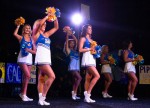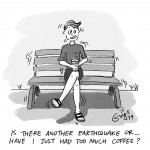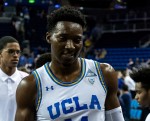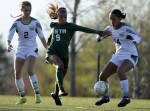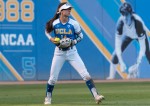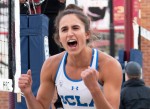This post was updated June 14 at 4:26 p.m.
The UCLA Spirit Squad director was dismissed following a Title IX investigation of her role in allowing a donor to escort UCLA dance team members to a sexually explicit Las Vegas show in November, according to the Orange County Register.
Mollie Vehling, who oversaw the UCLA Spirit Squad for nearly 20 years, was placed on leave in December and fired May 17 as a result of the investigation. She sent an email to the Spirit Squad, Junior Spirit Squad and donors, in which she denied the accusations and stated she would be appealing the decision.
“I categorically deny the allegations against me and object to the excessive penalty of termination,” Vehling wrote. “The biased investigations are outrageous and shameful and have been grossly mishandled. … I feel strongly that the University’s reaction is, in part, a reflection of the times and realities of today’s culture.”
Vehling allegedly forced six members of the spirit squad to accompany a 76-year-old former state senator Alan Robbins – a UCLA alumnus and major donor – to a show at Caesars Palace on Nov. 23 while the team was in Las Vegas for a men’s basketball tournament, a dance team member told the Orange County Register.
Robbins said the content of the show was inappropriate in an interview with the Orange County Register, and the dancer, who chose to remain anonymous, said her teammates were made uncomfortable by the racy performance and Robbins’ comments.
The former senator resigned in 1992, served five years in prison for bribery, extortion and tax evasion, and had previously been accused and aquitted of having sex with two underage girls in 1978 and 1979.
After the investigation, the longtime booster has been deprived of his UCLA athletics seats, and Spirit Squad members were asked to tell Title IX officers about their experiences with Vehling, according to the Orange County Register. Multiple female team members said they felt Vehling had coerced them into spending time with Robbins and other donors, and that the director had not stepped in after hearing about the donors’ inappropriate actions, the Orange County Register reported.
Following Vehling’s dismissal, UCLA alumnus Mathew Satuloff started a petition to reinstate the former Spirit Squad director, claiming in his statement that the UCLA Alumni Association has long been at odds with Vehling.
“(Vehling) has always wanted to entertain all of the fans. This is far different from Alumni Association’s focus on entertaining the ‘Big donors’ and always raising money,” Satuloff wrote. “(The Alumni Association) would look for any small incident where they could make Mollie ‘the fall guy’…and last year they got their wish.”
The petition has 946 signatures as of this story’s publication. The number continues to rise.
